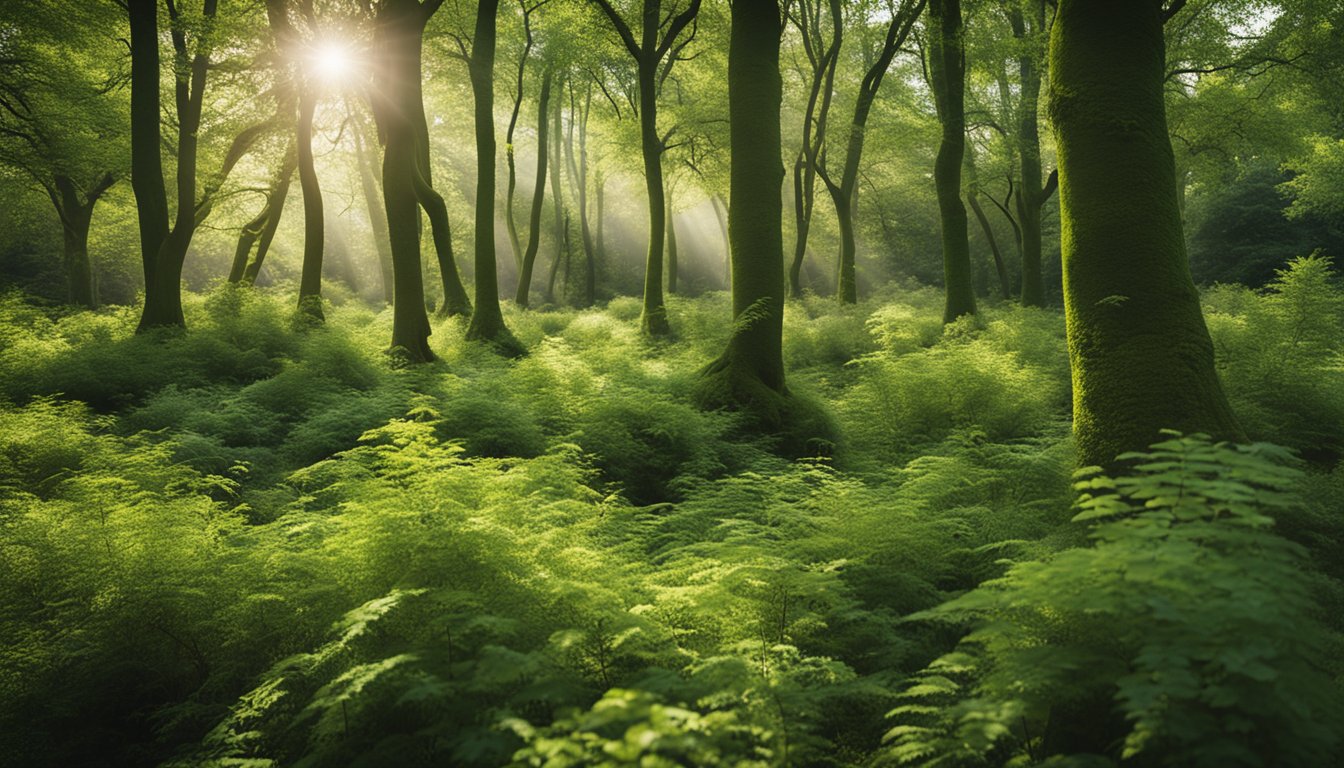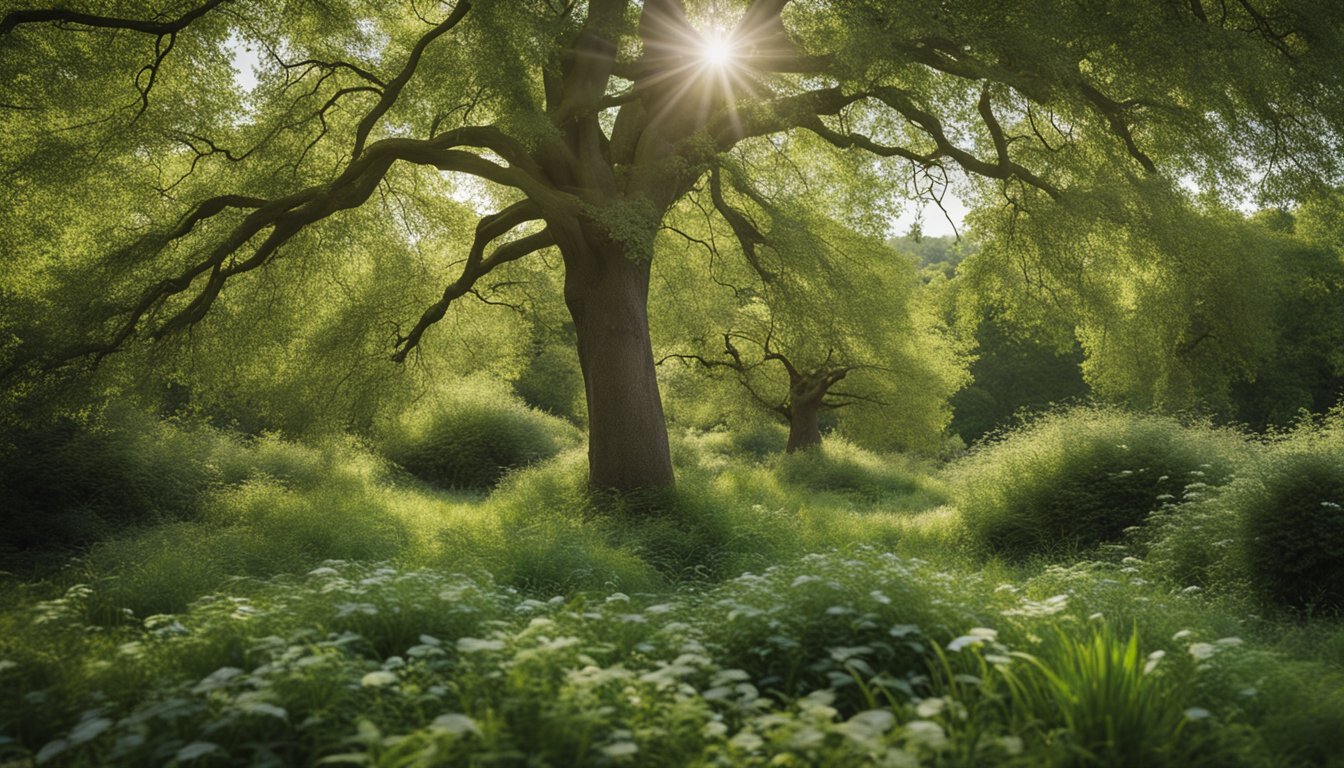Late updated: 11 Oct 2024 14:10
Written by: Emily Thornton
Maximising Biodiversity With UK Native Tree Planting: Enhancing Ecosystems
Biodiversity is an essential factor in maintaining healthy ecosystems, and planting native tree species is one of the most effective ways to enhance it. Native trees, such as the UK's mighty oak and birch, support a diverse array of wildlife, housing everything from insects to birds and mammals. By focusing on native tree planting, we contribute to preserving and boosting the rich biodiversity unique to the UK.

As urbanisation and climate change threaten the natural environment, it becomes increasingly important to sustain and enhance the natural habitats that support life. Native woodlands are critical as they provide habitats for numerous species, some of which are currently threatened. The restoration and expansion of these woodlands can help combat these environmental challenges, ensuring the survival of various species and the health of entire ecosystems.
As we explore the best practices for planting native trees in the UK, it's crucial to consider factors such as planting location, species selection, and maintenance practices. This ensures not only the survival of the trees but also maximises their contribution to biodiversity. Let's delve into how we can actively play a role in this vital conservation effort.
Key Takeaways
- Native trees boost biodiversity by supporting various species.
- Expanding native woodlands helps combat environmental challenges.
- Best practices in tree planting maximise ecosystem benefits.
Importance of Biodiversity in Native Woodlands
Biodiversity in native woodlands plays a vital role in ecosystem stability and climate regulation. By supporting various species, these woodlands offer environmental benefits and aid in conservation efforts.
Biodiversity and Climate Change
Native woodlands are crucial in mitigating climate change effects. They act as significant carbon dioxide sinks, absorbing and storing carbon that would otherwise contribute to global warming. The varied plant and animal life found within these ecosystems enhances carbon uptake, as different species contribute to the carbon cycle in unique ways.
Woodlands comprise trees, fungi, and invertebrates, creating complex networks that increase resilience to climate fluctuations. The diversity within these environments helps stabilize microclimates, offering protection against extreme weather conditions, thus playing a significant role in climate adaptation strategies. Conservation efforts aimed at protecting these woodlands are crucial as they directly support biodiversity, which in turn affects climate regulation positively.
Benefits of Native Trees to Wildlife
Native trees provide essential habitats and resources for countless wildlife species. These areas support a wide range of birds, mammals, invertebrates, and fungi, each playing a part in maintaining ecological balance. For instance, certain bird species rely on native trees for nesting, while invertebrates find food and shelter in the forest underbrush.
The symbiotic relationships fostered within these environments are vital for the survival and thriving of many species. In native woodlands, these organisms have co-evolved, forming a resilient ecosystem adapted to local conditions. By planting and conserving native trees, we help preserve crucial habitats that maintain wildlife populations and promote biodiversity conservation.
A Guide to Planting Native UK Trees

Planting native trees in the UK is crucial for enhancing biodiversity and sustaining ecosystems. By carefully selecting tree species and implementing effective conservation strategies, we can manage threats and maximise the ecological benefits of these plants.
Selecting the Right Tree Species
Choosing the appropriate tree species is essential for successful reforestation efforts. Native species such as English oak, beech, hazel, and Scots pine are well-suited to the UK climate and provide habitats for a wide variety of wildlife. The Forestry Commission and Defra offer guidelines and resources for selecting species based on soil type, climate, and intended use.
Ancient woodlands are rich in biodiversity; thus, planting complementary species nearby can help maintain these unique ecosystems. English oak, for instance, supports hundreds of insect species, aiding birds and mammals alike.
Managing Threats and Conservation
Effective conservation involves addressing threats such as ash dieback and invasive species. It's vital that we monitor tree health and report diseased trees to prevent the spread of pathogens. Deadwood also plays a role in tree conservation by providing habitats for fungi and insects, integral to the forest life cycle.
Partnerships with organisations like Woodland Trust help in promoting conservation awareness and management practices. These partnerships can assist in maintaining ancient trees and halt the loss of vital habitats.
Strategies for Maximising Biodiversity
Creating diverse habitats encourages a broader range of species. Techniques like agroforestry integrate trees with agriculture, providing benefits such as enhanced soil quality and increased wildlife movement corridors.
Diversifying planting methods, including natural colonisation and controlled seeding, supports woodland creation that mimics natural woodland processes. Engaging communities in these efforts promotes stewardship and encourages volunteers to engage in long-term conservation activities. This collective approach creates robust ecosystems where native species thrive, ensuring the continuous growth and health of our natural landscapes.
The collective efforts we invest in selecting tree species, managing threats, and employing biodiversity strategies ensure that our landscapes are resilient and life-supporting for generations to come.
Frequently Asked Questions

In our discussion of maximising biodiversity through UK native tree planting, we address how woodlands support ecosystems, the importance of tree diversity, and the contributions of tree planting to environmental health. Additionally, we explore which tree species benefit biodiversity most effectively.
How can the creation of woodlands benefit UK biodiversity?
The creation of woodlands enhances habitats for numerous wildlife species. Native woodlands establish critical ecosystems that are essential for birds, insects, and mammals. These ecosystems support various food webs and breeding grounds, which are vital for the survival of these species.
What role do trees play in supporting biodiversity?
Trees provide habitat, food, and shelter to countless organisms. In the UK, they help maintain ecological balance by supporting complex communities of birds, insects, and fungi. The structure of trees allows species to thrive, creating a diverse and interconnected ecosystem.
What is the importance of tree diversity in UK ecosystems?
Diverse tree species contribute to the resilience and health of woodland ecosystems. Tree diversity ensures a variety of resources and habitats, supporting a broader range of species. This diversity strengthens the ecosystem's ability to withstand diseases and climate change.
How does tree planting contribute to increasing biodiversity in the UK?
Tree planting supports biodiversity by creating new habitats and encouraging recolonisation by native species. Planting native species helps restore degraded landscapes and provides opportunities for wildlife to thrive. These efforts are crucial in reversing biodiversity loss.
Why are UK woodlands significant for environmental health?
UK woodlands play a vital role in carbon sequestration and air purification. They also help regulate water cycles and prevent soil erosion. The presence of healthy woodlands supports not just biodiversity, but also the broader environmental health and sustainability of our ecosystems.
Which species of trees are most beneficial for biodiversity in the UK?
Species such as oak, birch, and willow are particularly beneficial. These trees support a wide array of wildlife, having developed symbiotic relationships over thousands of years. Their adaptability to local conditions makes them key players in supporting and enhancing the UK's biodiversity.
